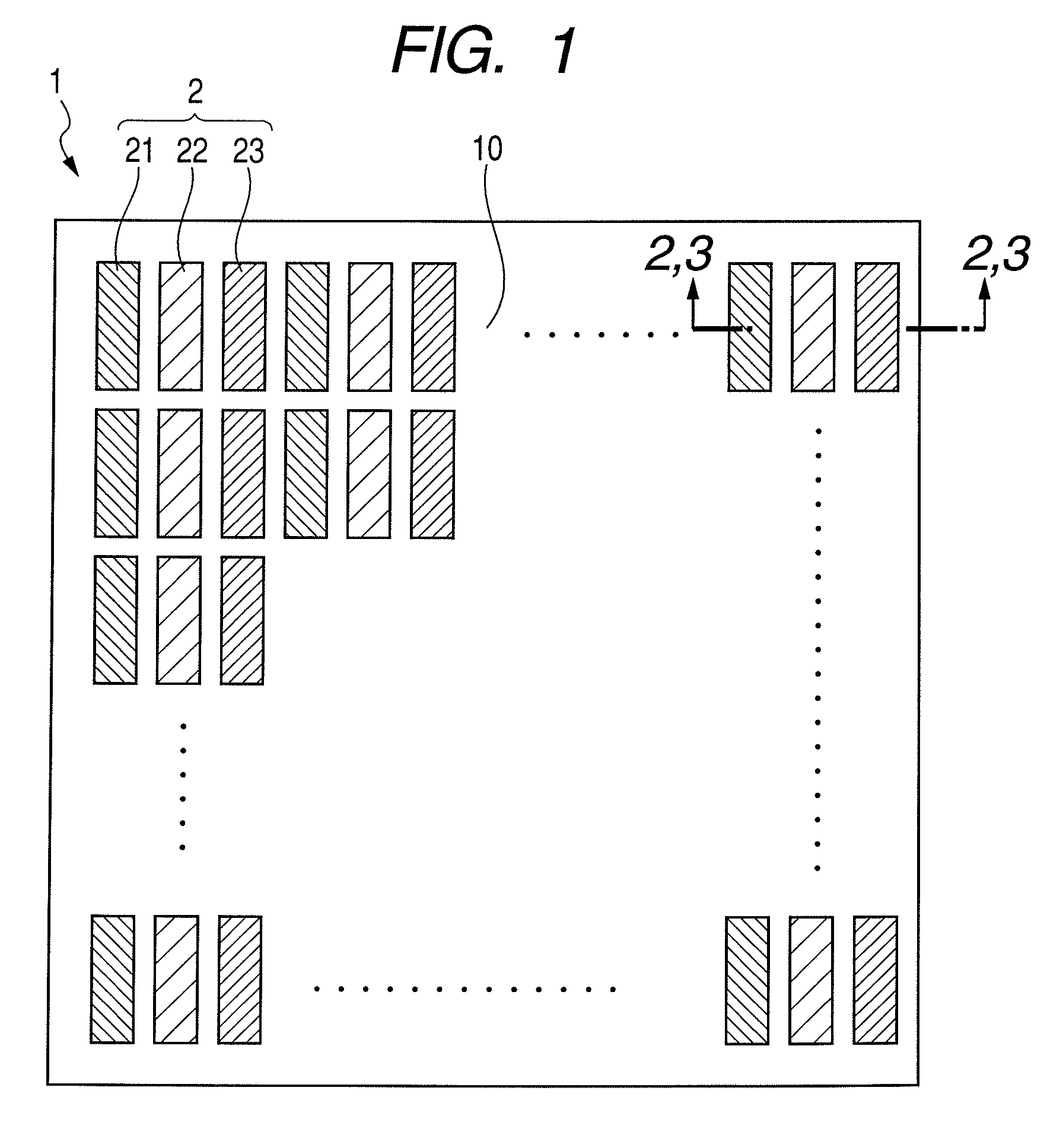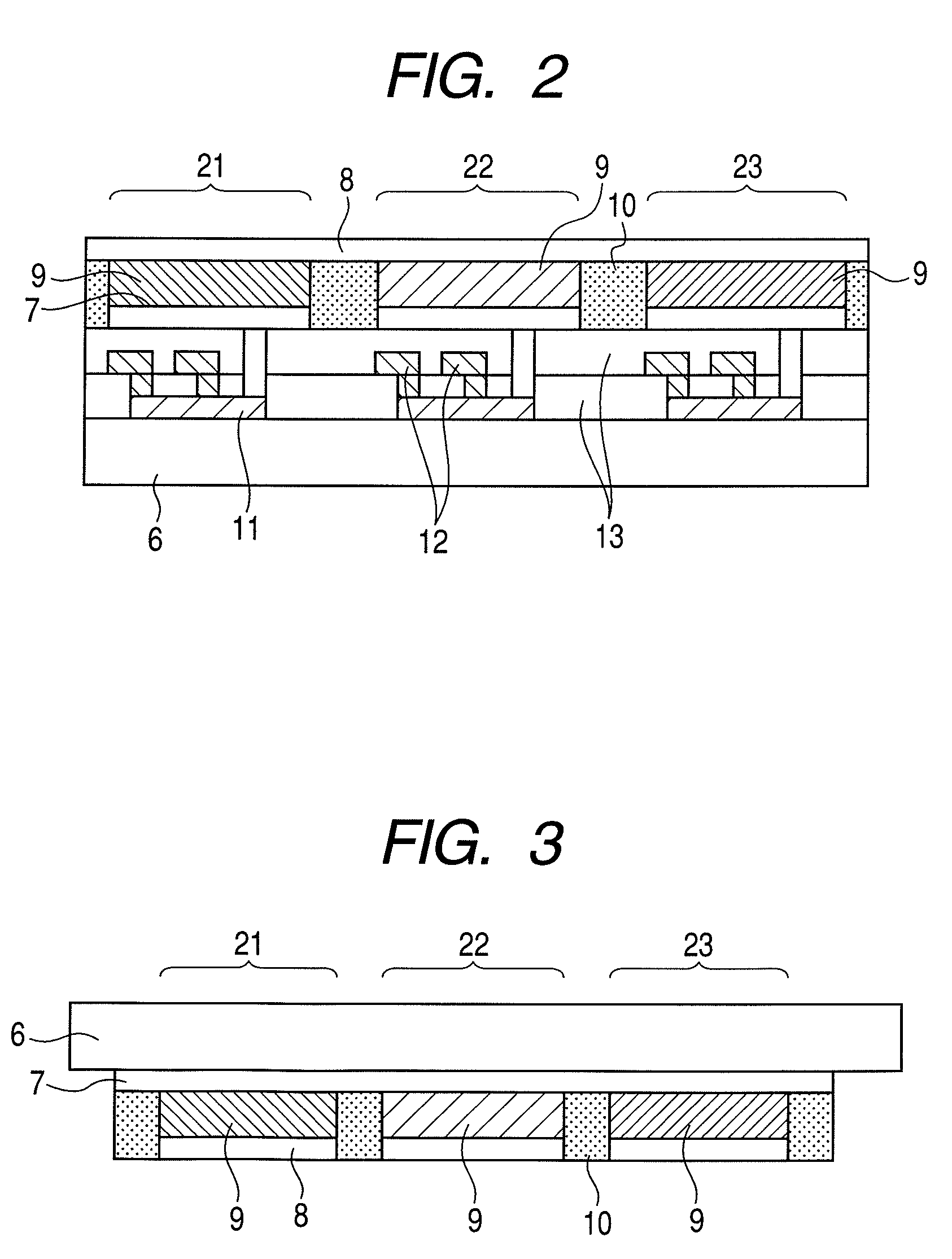Method of manufacturing organic electroluminescence display apparatus
a technology of electroluminescence display and organic technology, which is applied in the field of manufacturing organic electroluminescence, can solve the problems of aging performed longer than needed to exceed the upper limit, the upper limit of the amount of change with elapsed time which is demanded for use, and the difficulty of estimation of the change in |dl/dt| due to aging at the maximum luminance during use, etc., to achieve the effect of preventing aging
- Summary
- Abstract
- Description
- Claims
- Application Information
AI Technical Summary
Benefits of technology
Problems solved by technology
Method used
Image
Examples
embodiment 1
[0049]In this Embodiment 1, a current is applied to the organic EL devices 2 in the organic EL display apparatus 1 to cause the organic EL devices 2 to emit light at a constant luminance. The aging is performed until |d(log η) / dt| at the luminance falls within a predetermined range. When the organic EL devices 2 in the organic EL display apparatus 1 are caused to emit light at a predetermined luminance, the current efficiency of the organic EL devices 2 is lowered due to an increase in current density, which is caused with the deterioration of the organic EL devices 2. The decrease in current efficiency of the organic EL devices 2 is moderated, and |d(log η) / dt| gradually decreases. Then, when |d(log η) / dt| falls within a predetermined range, the aging is terminated. As a result, a rate of change in luminance per unit time when the organic EL devices 2 in the organic EL display apparatus 1 are driven at a predetermined current or voltage after the aging can be restrained to be equal...
embodiment 2
[0050]In this Embodiment 2, a current is applied to the organic EL devices 2 in the organic EL display apparatus 1 to cause the organic EL devices 2 to emit light at a constant luminance. The aging is performed until |d2(log η) / dt2 at the luminance falls within a predetermined range. When the organic EL devices 2 in the organic EL display apparatus 1 are caused to emit light at a predetermined luminance, the current efficiency of the organic EL devices 2 is lowered due to an increase in current density, which is caused with the deterioration of the organic EL devices 2. The decrease in current efficiency demonstrates a tendency to be rapid at the start of decrease and then be moderated. Correspondingly, |d2(log η) / dt2| gradually decreases in the aging process. Then, when |d2(log η) / dt2| falls within a predetermined range, the aging is terminated. As a result, a rate of change in luminance per unit time when the organic EL devices 2 in the organic EL display apparatus 1 are driven at...
embodiment 3
[0051]As a variation of Embodiment 1 or 2 described above, an aging method for measuring |d(log η) / dt| (|d2(log η) / dt2|) at predetermined time intervals is one of the preferred aging methods. In order to measure |d(log η) / dt| (|d2(log η) / dt2|), the current efficiency is required to be measured at least twice (three times). Therefore, when a set of at least two (three) consecutive measurements is regarded as one measurement period, the aging can be performed in an arbitrary step between the measurement periods. As a result, by arbitrarily combining steps having different aging effects, the aging for allowing the rate of decrease in luminance after the aging to fall within the range of the rate of decrease in luminance, which is demanded for the use, can be performed.
PUM
 Login to View More
Login to View More Abstract
Description
Claims
Application Information
 Login to View More
Login to View More - R&D
- Intellectual Property
- Life Sciences
- Materials
- Tech Scout
- Unparalleled Data Quality
- Higher Quality Content
- 60% Fewer Hallucinations
Browse by: Latest US Patents, China's latest patents, Technical Efficacy Thesaurus, Application Domain, Technology Topic, Popular Technical Reports.
© 2025 PatSnap. All rights reserved.Legal|Privacy policy|Modern Slavery Act Transparency Statement|Sitemap|About US| Contact US: help@patsnap.com



